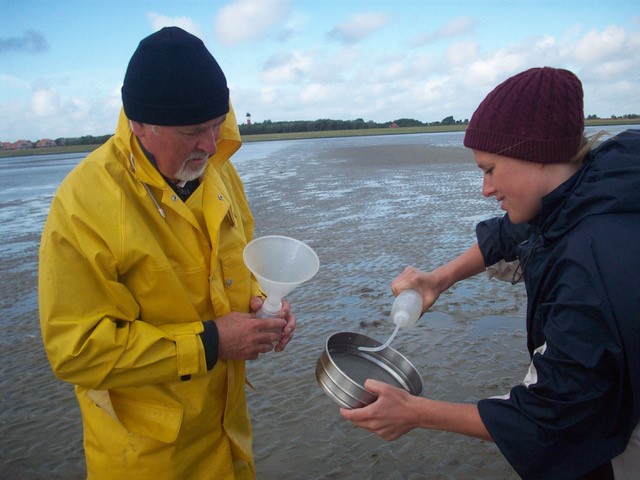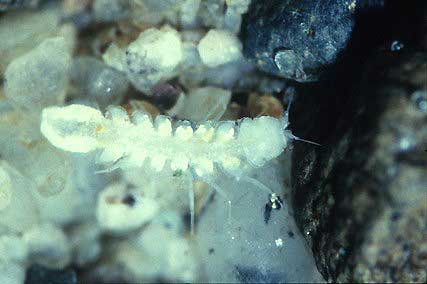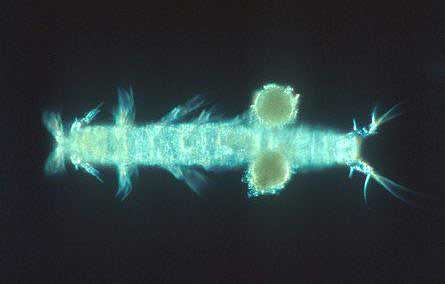Our Treasure of the Month: a Collection from the Underworld
 Amphipod, lateral view – Niphargus kochianus – An example from the collection, which includes more than 10,000 small creatures. © Dr Thomas Glatzel
Amphipod, lateral view – Niphargus kochianus – An example from the collection, which includes more than 10,000 small creatures. © Dr Thomas Glatzel
Under the surface, it is often much livelier than we suspect. This is true not only for the ocean, but also for our primary habitat: the city. The underworld has long been considered mystical and even a portal for gods or a gateway to the world of the dead. Our researchers are looking into what really lurks in the shallows:
Our treasure of the month is a collection of more than 10,000 small living creatures collected in groundwater and interstitial systems of Germany and other places around the world. This amazing collection of crustaceans was donated by Dr. Thomas Glatzel from the University of Oldenburg just before his retirement earlier this year. Those animals represent not only Dr. Glatzel’s scientific work but also the work of several German researchers and students on subterranean and interstitial habitats , such as Dr. Ulrich Einsle, Dr. Siegfried Husmann and Prof. Dr. Horst Kurt Schminke.
 Alexandra Segelken-Voigt and Thomas Glatzel sampling meiofauna in the mudflats on Wangerooge.
Alexandra Segelken-Voigt and Thomas Glatzel sampling meiofauna in the mudflats on Wangerooge.
Dr Thomas Glatzel (left) has made the collection available to the Museum der Natur Hamburg.
© Dr Thomas Glatzel
The Glatzel collection not only includes hundreds of individuals of copepods, amphipods and bathynellids, but also comprises of an accessory collection of all the literature collected during his academic life, as well as photographs, maps, field notebooks and videos. Because of this, this collection might represent one of the most important of its kind in Germany. For this reason, Curstacea curator Nancy Mercado at the Museum der Natur Hamburg is particularly pleased to be able to look after them and make them available to researchers working on the conservation of crustaceans worldwide.
Why to study groundwater habitats and its associated fauna?
Groundwater is among the most essential resources for human well-being and the largest freshwater habitat on earth; as well, this habitat harbors a unique and diverse fauna. A significant part of this extraordinary diversity consists of invertebrates, especially small crustaceans such as copepods, ostracods, amphipods, bathynellids and isopods. Moreover, groundwater biodiversity potentially be indicative of the ecological status of subterranean ecosystems that provide important ecosystem services such as drinking water. These water resources are under threat worldwide due to agriculture, industry and urbanization. All these human activities may endanger groundwater ecosystem health, for example can alter its ecological structure and function and the sustainably of the ecosystem services they provide.
“Donated collections such as Dr. Glatzel’s, are essential for monitoring the biodiversity of subterranean systems, as they not only help us to investigate the biodiversity, but also provide information about the physical and chemical characteristics and geographic distribution of such systems. All of this it is important to strengthen the conservation strategies of these underworld systems and their associated fauna!”, says Nancy Mercado about our Treasure of the Month.








